New numbering system supports encoding best practices for RAIN
The RAIN industry shipped more than 52.8bn RAIN tag chips/ICs globally in 2024. With expectations for the industry to connect trillions of items in the future, the RAIN Alliance is introducing a new standards-based numbering system and encoding best practices for RAIN that will ensure businesses are able to easily and reliably identify, locate, and authenticate their items of interest.
The numbering system is now available. Today, the RAIN Alliance is calling for member and partner commitments to support this encoding best-practices initiative.

Why do we need standards-based numbering systems?
RAIN tags must each have unique and properly encoded identification numbers so that individual items can be identified, located, and authenticated. If RAIN tag data is not uniquely and properly formatted during the encoding process, unwanted items may be read. This is known as tag clutter.
For example:
- Without unique numbers: A postal service tracks the packages traveling through its facility by tagging each box. If a box of apparel arrives with items that are tagged with a numbering system similar to that of the postal service, then there is potential for duplicate numbers to appear for each item.
- Without proper encoding: A marathon clocks runners’ times at the finish line using tagged race bibs. If a delivery truck full of tagged items is parked near the finish line, and those tags are not correctly encoded using a standards-based numbering system, then the marathon may not be able to read all of the runner’s tags before they move past the finish line due to interference with tags in the delivery truck.
Following a standards-based numbering system ensures unique and proper RAIN tag encoding, which in turn enables effective and efficient filtering of your and others’ tags. This means that you read only your tags of interest, ensuring the success of both your and others’ deployments.
How does the new numbering system work?
The RAIN Alliance is introducing a new ISO numbering system to simplify encoding and reduce tag clutter. You can learn more about this numbering system.
To start using the RAIN Alliance ISO numbering system, begin by applying for a Company Identification Number (CIN). The RAIN Alliance ISO numbering system application webpage is available now, apply here .
How is the RAIN Alliance ISO system different from other numbering systems?
The RAIN Alliance ISO numbering system is complementary to other numbering systems, providing an alternative if those don’t work for your business. Numerous standardized numbering systems from ISO and GS1 already exist, and they all cater to collision-free identification of RAIN tags, but they do not cater well to identification systems using a proprietary or vendor-defined data format.
The RAIN Alliance ISO numbering system is intended for applications which do not fit into existing numbering systems, providing unique identification with the goal of reducing interference from tags using proprietary or vendor-defined data format. You can learn more about the RAIN Alliance ISO numbering system.
Which encoding system is right for me?
What’s most important is you choose a numbering system that is standards-based so you can ensure unique and proper tag encoding. Standards-based numbering systems enable effective and efficient filtering of your and others’ tags. This means that you read only your tags of interest, ensuring the success of both your and others’ deployments.
How can I drive encoding best practices?
The RAIN Alliance is calling on its members and partners to commit to sharing encoding best practices for the success of all RAIN deployments. Want to join the RAIN Alliance? Apply now. Already a member? See recommended actions below using the webform or by emailing info@therainalliance.org.
- Apply for a Company Identifier: Encode your tags with the new, easy-to-use RAIN Alliance ISO numbering system. The first step is to apply for a unique Company Identification Number (CIN). For example, a RAIN Alliance member commits to applying for a CIN for themselves and to enabling their customers to apply for their own CINs. Apply Here
- Educate yourself and your partners in proper tag encoding: RAIN Alliance members can learn about the existing standards-based numbering systems and share this knowledge with your partners. For example, a RAIN Alliance member commits to publicizing encoding resources to their partner network; or a tag converters’ operations team participates in a RAIN Alliance-hosted webinar; or a standards organization includes additional, intuitive information about encoding.
- Make proper encoding automatic and easy: RAIN solution providers can design their products to ensure tags are properly encoded without in-depth knowledge of standards-based numbering systems. For example, an encoding software program provider could develop an encoding “wizard” or publish open-source programming code for automatic encoding of standards-based numbering systems; or a converter or chip vendor could modify their pre-encoding to align with a standards-based numbering system.
